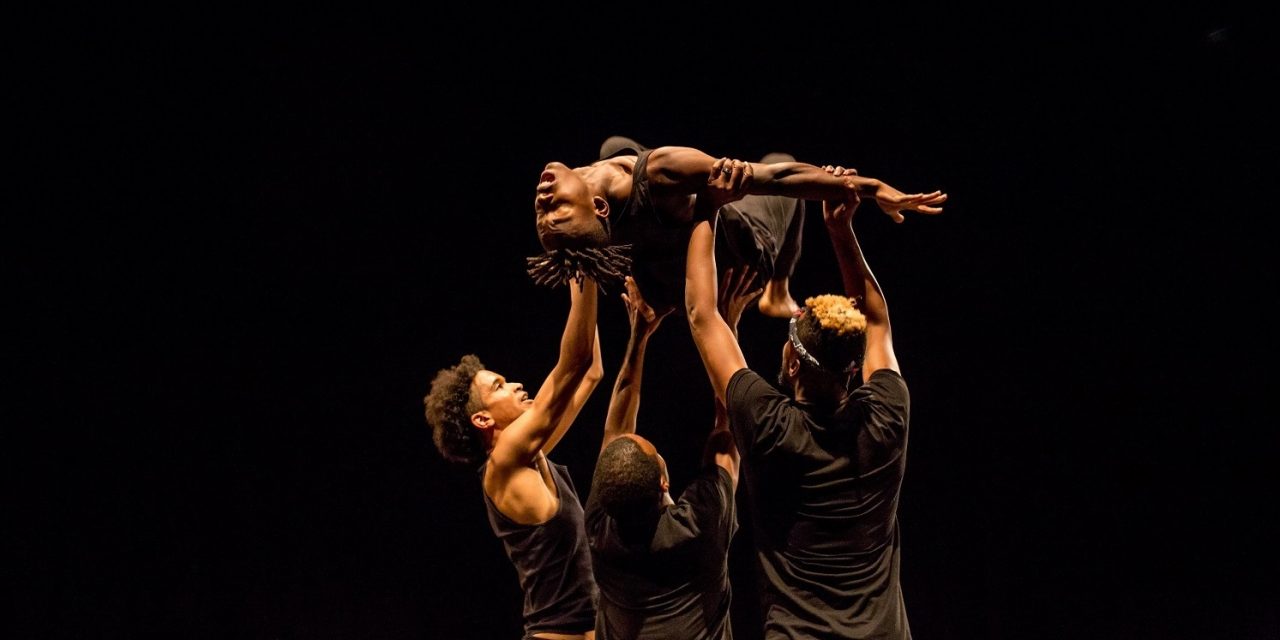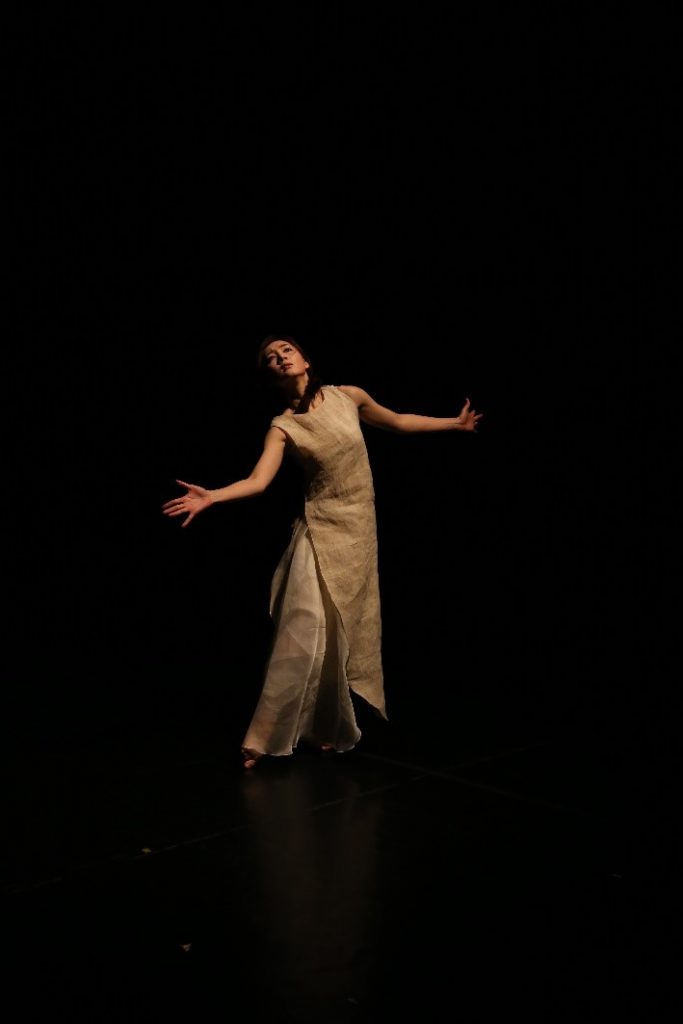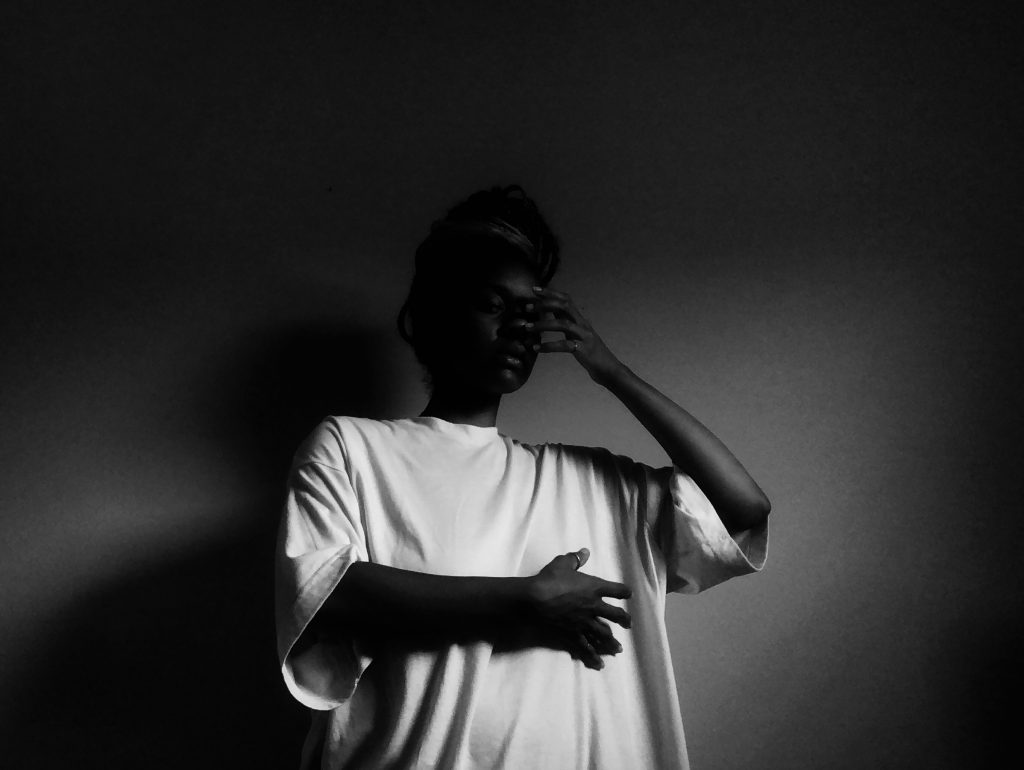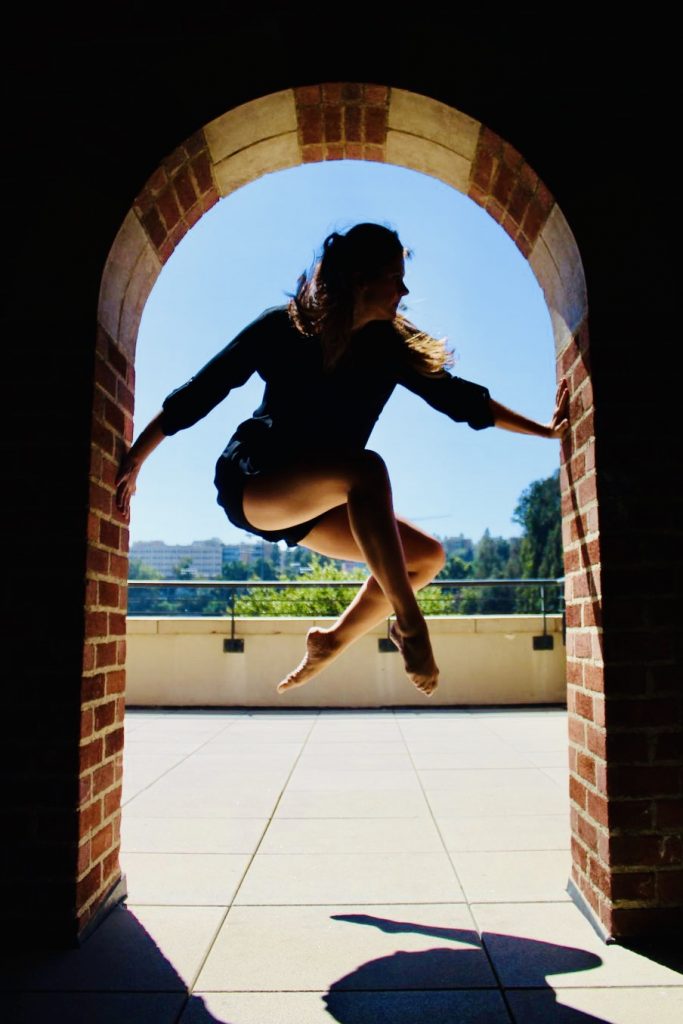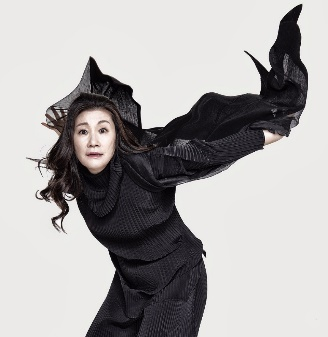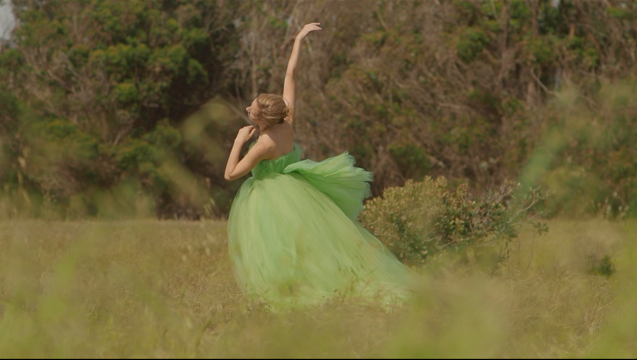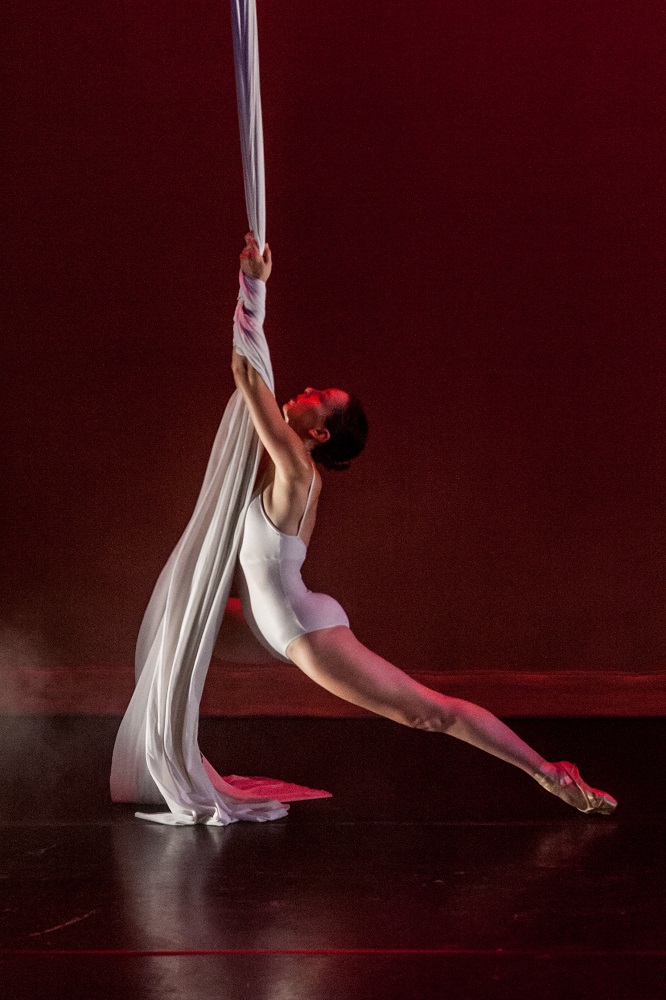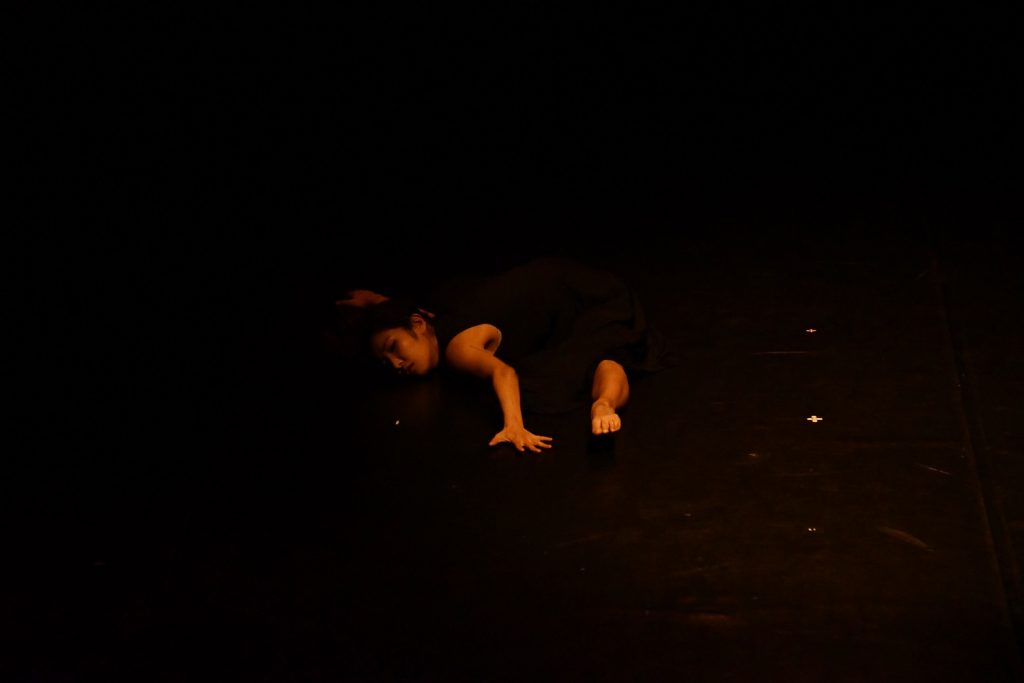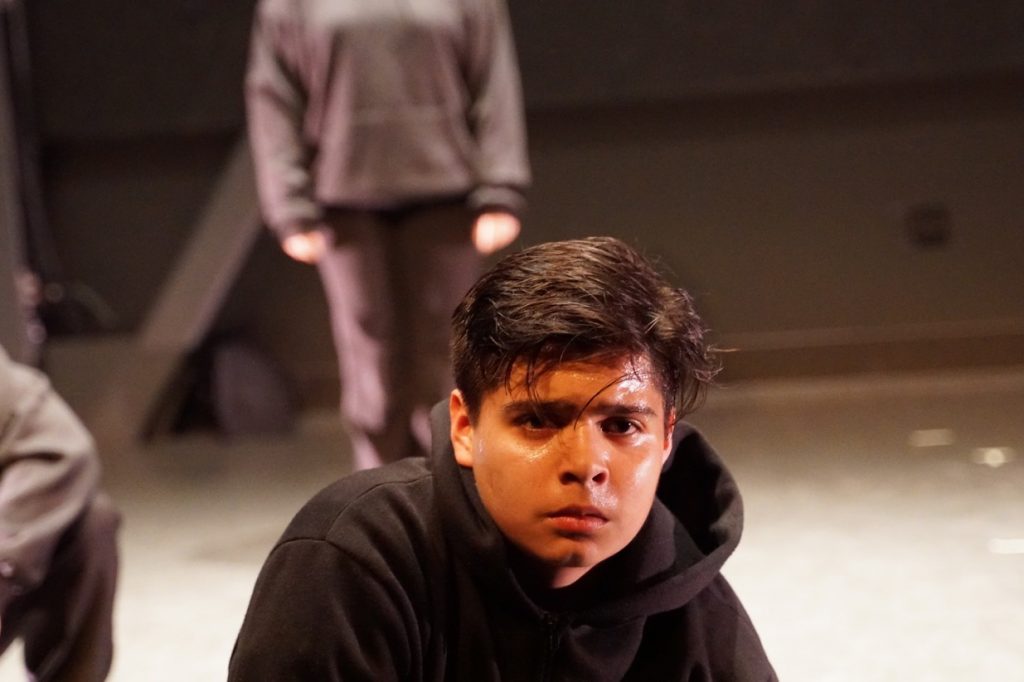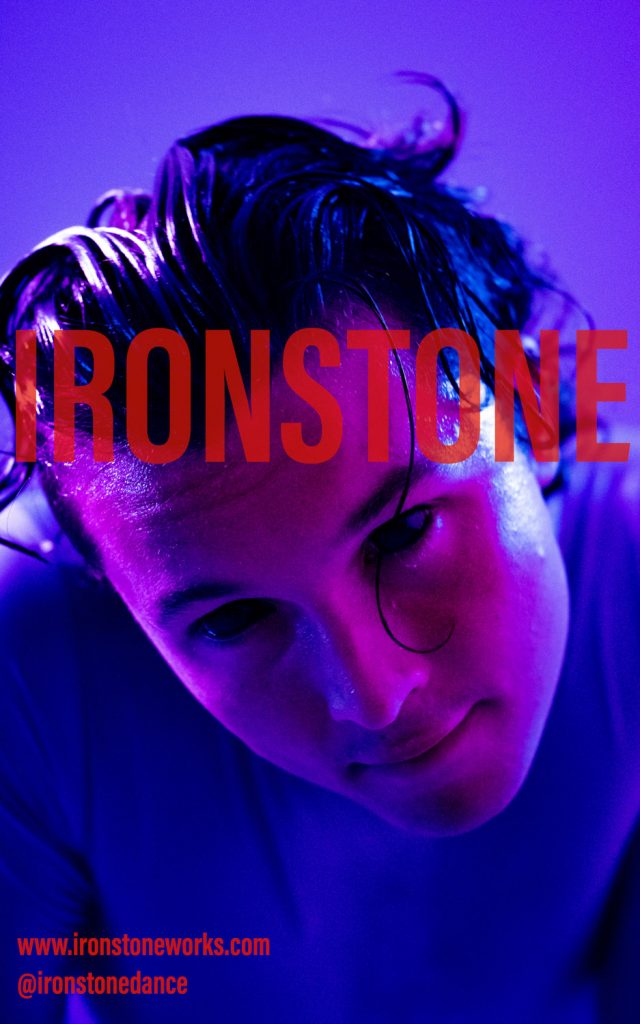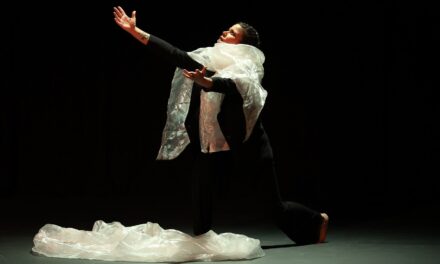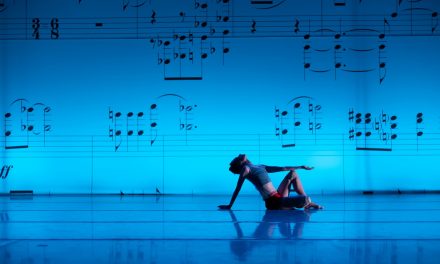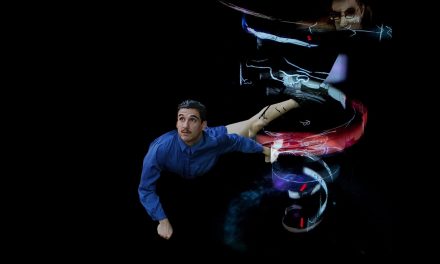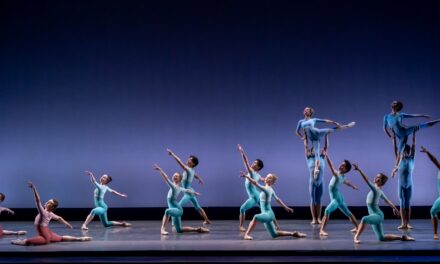Unless made specifically for camera, watching dance on a small screen is difficult for many reasons. One misses the energy emanating from the performers onstage as well as the reactions of the audience members. While observing dance at home, one can also be very easily distracted. Co-produced by Deborah Brockus and the Luckman Fine Arts Complex under the leadership of Executive Director Wendy Baker, the second weekend of the LA Dance Festival (LADF) streamed online October 9 – 11, 2020.
Last year several works from Los Angeles choreographers were invited to perform at the Seoul International Dance Festival in TANK and in exchange Korean dance artists presented their work on LADC 2019. Fortunately for artists in both countries, this exchange occurred again this year. Weekend Two included works from both categories – made for camera and not – and while some of each were successful in the transition from state to computer, others were not, and like all festivals, we only got a taste of each choreographer’s work.
AnHang: A Flock of Wild Goose was choreographed by Korean artist Hyun Sun Kim for three dancers performing in several beautiful outdoor sites. Costumed in beautiful long black dresses with looped black mesh head dresses, we see the three black geese at rest, preparing for flight, flying in formation and once on the ground again, vying for who will next lead the flock. The movement is laced with lyrical arm gestures, quiet and subtle moments atop cement block, and delicate shifts in formation while gliding over a grassy hillside. There was even a very brief hommage to the dance of the cygnets from Swan Lake.
“AnHang” means the flight of wild geese, and although I am not certain three birds make a flock, the dance was beautifully constructed and performed by Hyun Sun Kim, Hyeon Mi Park, and Ye Eun Lee. The cinematography was excellent and the editing very well done. The composer for AnHang was Chung Eun Han and the musicians performed on traditional instruments called hun, daeguem, and sogeum, and a western instrument called the contrabass which often produced bird calls and the feeling of flight. The film was Directed by Moonea Choi with Videography by Min H. Lee.
Though interesting to watch, Planet Earth Is My Playground, choreographed and performed by Lamonte Goode, appeared to be more of an infomercial for Goode’s website Cyber Yoga than a dance video. Performed to music by Quadrant and Cease Goode almost succeeded in fusing together Yoga with slow motion Break Dancing while balanced on one hand, but there was no variety in tempo and his movement vocabulary was limited. While I greatly I admire his strength and the overall meditative feel of the video, I was not impressed with the presentation. The Videography was by Kenny Han.
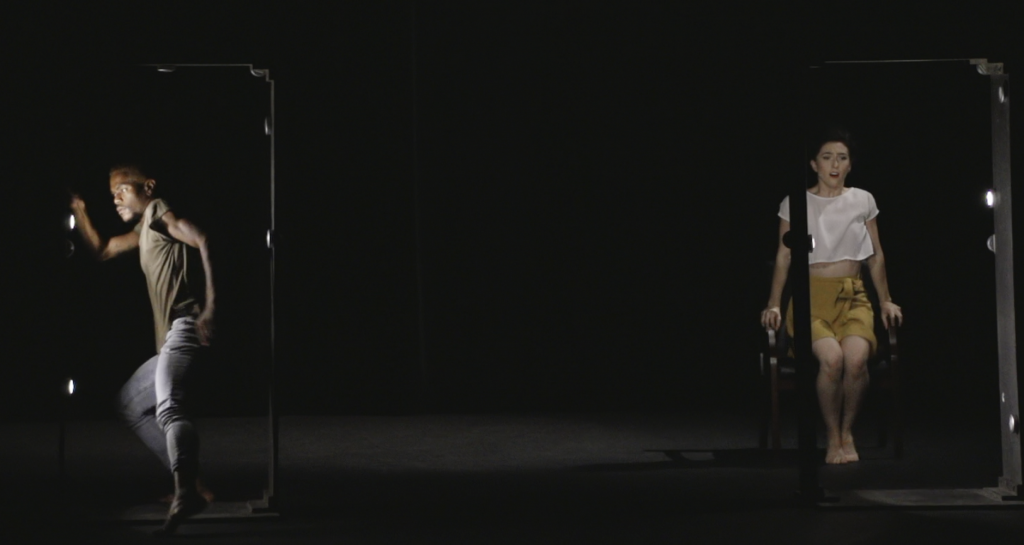
L to R Roberto Gomez, Julienne Mackey in “Apt #5” choreography by Deborah Brockus and Dancers – Photo courtesy of BrockukRED
Apt #5 was a voyeuristic look into the private lives of two people. Choreographed by Deborah Brockus and the dancers Julienne Mackey and Roberto Gomez and directed by Brockus. The set is two doorway size frames, lined inside with lights that can be turned on and off by pressing them, and two chairs. The partial lighting created by these lights adds to the mystery of Apt #5. Are these two living in separate apartments or is the man only living in the woman’s imagination. At times they are separate and for a while they are together but the relationship is troubled. At the end we still do not know, but, like life, it is only a passerby’s brief glimpse into Apt. #5. The music was a collage of songs by KitMix.
I first saw the powerful Brother’s Keeper live on the LADF 2017 FRINGE concert at Diavolo Performance Space. Choreographed by Ken Morris, this work is as timely today as it was then, which sadly means that not much has changed in our society. Brother’s Keeper was inspired by the murder of Trayvon Martin, but it is primarily about the struggle all Black men go through on a daily basis in this country. Jamie Burton gives an emotionally charged performance during the opening solo danced to the voice of President Barak Obama speaking to the country about Trayvon’s death. The work then moves to three other men moving through street-like conversations to music by DJ Pooch and once Burton returns onstage, the choreography for this quartet of male dancers becomes athletic, confrontational and ends with a strong signal of determination and resistance. It is a dynamic work.
Choreographed and performed by cyan cian, 2323 Black Luna harkens back to the 1960s and trips on LSD. It is a showcase for kaleidoscope style special effects with a hint of silhouette dancing in a window by cian. The meaning of the work is hidden somewhere in the text on the video: “Ode to Crossings, Magic, and Shadows/ Ode to Love, Loving, Being Loved / Ode to Journeying Within Throughout and Even Still / Ode To Darkness / Ode To Pleasure / Ode to Grief / Ode to the Real / Ode to the Under / Ode to the Weight”. 2323 Black Luna was directed and edited by Paris Cian. The music was by Tru Sound and Paris Cian.
Jana Taylor choreographed, directed and performed in A Noiseless Patient Spider inspired by a poem with the same title by American poet, essayist, and journalist Walt Whitman. We first see Taylor very slowly shifting positions on a couch with Whitman’s poem being read by Holly Jones. The dance then moves outside as Taylor continues to move ever so little on a small bridge that crosses a lovely stream. In the background is new age sounding music by Elliot Jones. Fortunately, this work was short.
One of the highlights of the evening was a dance in four parts titled Nonsense II choreographed by Ok Kim. In 1990, Kim choreographed Nonsense inspired by a tragic time in South Korea’s history, the Gwangju Democratization Struggle which occurred on and around May 18, 1980. Kim titled the work Nonsense because “no matter what truth we spoke it was nonsense at all.”
Thirty years later, Nonsense II continues to express this era. A single figure (Kim) is seen on a small black square that eventually aids Kim to move through the space as she performs. Arms appear from behind three tall black panels which are moved about by three women dressed in elegant white dresses, innocence before harder times. The movement is modern dance based with a strong influence of traditional Koren dance. A lone male figure who is there to offer comfort to the grieving women who have witnessed death for the first time.
In an emotional solo, Kim sings as she struggles with the pain of loss. Although her performance is strong, the work would benefit from the shortening of this section. The most dancing occurs in the last section. Kim explained that this style is a traditional form of Koren dance called Neokuri. The other strong dancers included Ok Kim, Jinkyong Park, and Heetae Moon. The Videographer was Minhee Lee and the music was by Sung-un Yu and In-yeol Park.
The mood becomes lighter with a short section of a longer dance by Janet Roston titled Gatsby Redux: The Covid Session #2. Three men, Camal Pugh, Daniel Valentine, and Michael Quiett dressed in elegant and beautifully made 1920s style costumes by Allison Pillard, dance to music by Gene Austin. The three men wearing masks, perform Roston’s lively choreography with grace and flair over the property of a very stylish home surrounded by green lawns, trees and well-groomed hedges. I look forward to seeing how this dance continues.
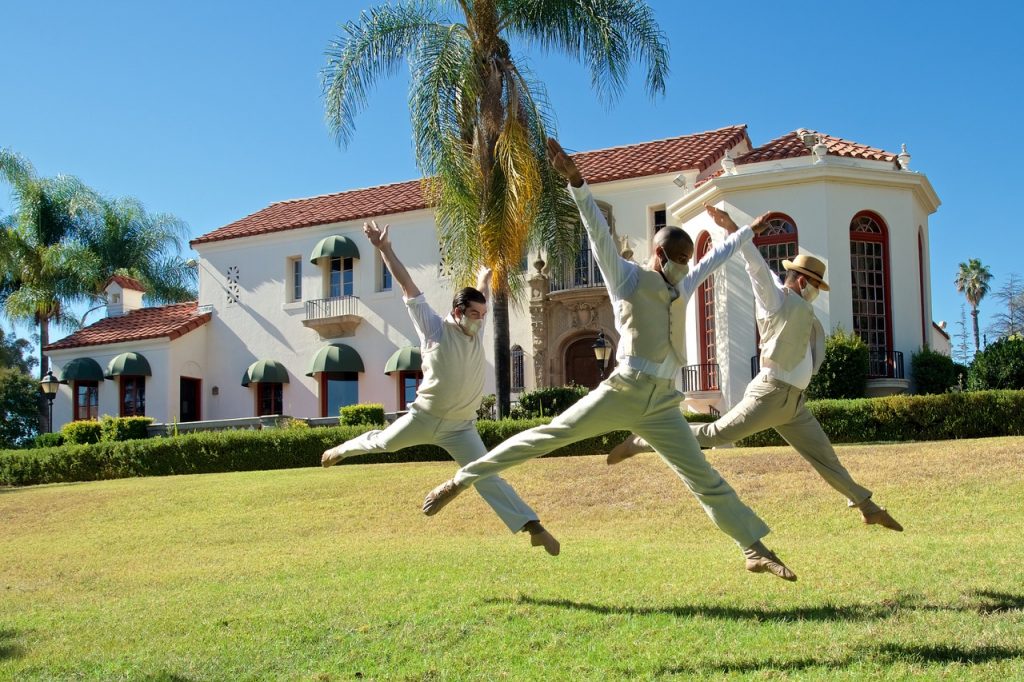
“Gatsby Redux” choreography by Janet Roston – Mixed eMotion Theatrix – Photo courtesy of the company
I first reviewed Versa-Style Dance Company video titled Playground in August of this year. Choreographed by the company’s co-founders Jackie “Miss Funk” Lopez and Leigh “Breeze-Lee” Foaad, this is one of the more successful module-style dances. Opening with a deserted playground filled the sounds of children playing, the faces and bodies of the Versa-Style dancers slowly come into focus and we watch as they do what they do better than most, Hip Hop. They dance individually in driveways, streets, garages and hallways. They dance individual movements and in unison, all to the wonderful “Playground Samba” by Colfo. As I wrote in my review, parts of this video focus on the very intricate footwork of the group; something that one could miss while observing them onstage. Versa-Style Dance Company is one of LA’s art treasures and the inspiring cast of Playground are Cynthia Hernandez, Ernesto Galarza, Anthony Berry, Harry Weston, Jess Pontillas, G’bari Gilliam, Brandon Juezan, Brianna Grey, and Ceanne Agustin. The video was directed by Lopez and Foaad who also appear in the dance and the Videography is by Brianna “Passion” Grey.
There were two videos that did not work for me. In each one, the movement felt improvised and bordered on the self-indulgent. Empty Spaces was choreographed and performed by San Francisco based Sandi Scheuber who found an empty parking deck while taking a walk and decided to experiment with choreographing inside. Robin Bisio choreographed Butterfly’s Lament and while the cinematography by Nik Blaskovich was gorgeous to observe, the dancing was minimal. This was more of a look at the butterfly reserve than a well-crafted dance. The dancer was Robin Bisio and her green tulle butterfly costume was by Anaya Cullen.
Kashmir was a beautifully produced and performed work by Luminario Ballet, choreographed by Artistic Director Judith FLEX Helle, Bianca Sapetto, and Dreya Weber. Known for combining Ballet and Aerial work, Kashmir did not disappoint. Gorgeous white hanging drapes became instruments of hiding, supporting and partnering dancers Ashley Hoffman and Stephanie Kim who danced on pointe, and as the necessary tools for Aerialists Sita Acevedo, Brett Womack, and Alex Stabler. The performers, the set and Dan Weingarten’s rich and colorful lighting combined to create not only wonderful dancing and thrilling aerial feats, but a visual treat. Whereas the video did not come close to giving the joy of seeing this company perform live, it was extremely enjoyable to watch. The videography was by David Sukonick with music by Robin Finck, Martis St. Pierre, Ana Lenchantin, Paz Lenchantin, and Jeffrey Brown
Korean artist Gawon Yoo choreographed and performed to sections from different musical interpretations of Wolfgang Amadeus Mozart’ Requiem. The work, titled Requiem for the Loss, was beautifully performed but suffered from a lack of movement variety, over acting and a dance that was simply too long. Solos are difficult to sustain and while Yoo is a gorgeous dancer, the choreography was not strong enough to hold my attention. The dance is an introspective investigation into coping with the loss of a friend or loved one and Yoo’s angst-filled floorwork and over emoting wore thin. The videographer was Minhee Lee.
Gema Sandoval has a long and illustrious history as a choreographer in Los Angeles. She is the founder, artistic director and choreographer for Danza Floricanto/USA that was formed in 1975. Sandoval’s stunning work Stereotypes is not like many of her works, but still incorporated her wealth of knowledge about her artform, Mexican Folklórico. Here, Sandoval uses the footwork she is familiar with and the repetition of rhythms to create a tension for a work that is very timely. Stereotypes is about how People of Color are perceived and treated in this country by those with racial prejudices and bigotry. Sandoval does not clutter this dance with any unnecessary items. The costumes are black shoes, pants and hoodies that for most of the dance prevent us from seeing the faces of the performers. And the movement has been stripped down to the bare truth of how Sandoval and many see the world. She dramatically brings this truth home when at the end of the dance each dancer has a brief rhythmic solo during which they remove their hood to reveal who they are.
Stereotypes is one of Sandoval’s strongest works with a social message. The dancers who so beautifully brought Sandoval’s vision to life were Mimi Rios, Carolina Talancon, Jocelyn Sanchez, Roger Aquirre, Marco Ines, Andrew Ortiz, Andy Romero, and Alan Ines. The Videographer was Tom Tsai and the stark but extremely appropriate lighting was by Eileen Cooley.
I have seen and enjoyed Ironstone’s work before, but I will admit that the video An Impossible Task with a Capital D left me wanting. The work’s message was never clear and the movement felt arbitrary and a showcase for visual effects. The narration by Ironstone, Sung and Patria did not help until the end when Ironstone spoke about his thoughts on creating a dance while improvising in and around a parking structure. The work was choreographed by Sung and Ironstone; performed by Ironstone, Sung, and Patria; and the Videography was by Sung and Patria.
The final work on this two hour concert was a wise and sometimes humorous statement about society through the lens of women. Titled His Party and choreographed by Brynn Bodair, we are taken backward into the 1950s when women were told that “a woman’s place was in the home”, but the posturing and movement speaks to the rebellion of that ridiculous notion. The title, His Party, obviously refers to this being a man’s world, but Bodair rightly thinks otherwise. The sets, the colors and the minimal movement work together to make a beautiful dance for camera.
The dancers who beautifully kept their characters consistent throughout this work were: Brynn Bodair, Eva Crystal, Halie Donabedian, Reagan Ricossa, Madeline Riley, Haley Smith, Monica Williams, and Sarah Stanley. His Party was directed by Brynn Bodair and Lauren Delisle.
To read the review of LADF weekend one by Tam Warner, click HERE.
To visit the LADF website, click HERE.
To view weekend three’s performance which runs October 9 -11, 2020 , click HERE.
Written by Jeff Slayton for LA Dance Chronicle.
Featured Image: Brother’s Keeper choreography by Ken Morris – Ken Morris Project – Photo courtesy of the artist

